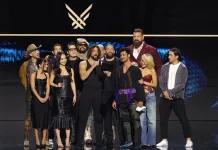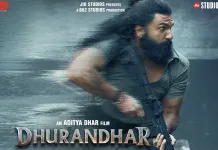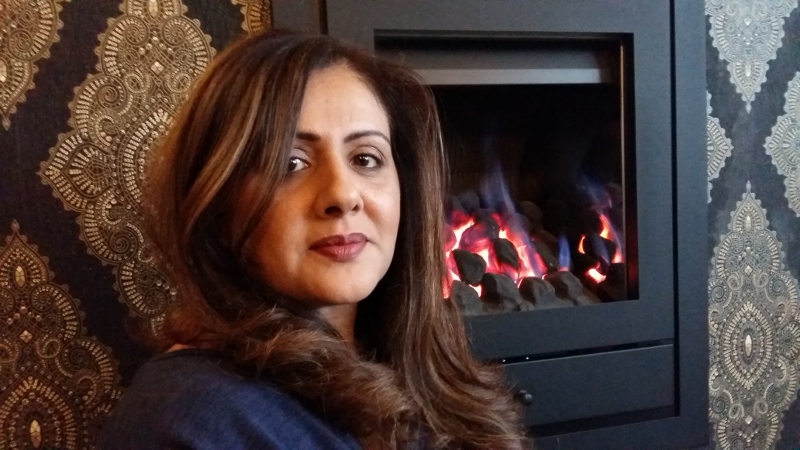
Question: We all know that you have been trained in classical music, which is pretty rare in today’s pop space. Are you the first one in your family? How did this journey start for you?
Answer: I have been fortunate enough to have been trained properly in Hindustani classical music. Rest everybody in the family, they’ve always been music lovers. But nobody could really make it to a proper professional music training.
I was just a kid, almost three years old when I used to hum whatever would play on TV or on the radio. My parents were alert enough to understand that their child’s singing really well and she’s able to copy whatever she’s hearing on the radio. Which means that she has a knack for it or she has the ear for it. That is when my father took me to Guruji, who then started training me, properly and professionally.
Question: Since this is more of South Asian heritage, I would like you to talk about more of your influences. Any particular gharana that impacted you or musicians which inspired you to start this journey?
Answer: The kind of Hindustani classical training that I had. It was through Patiala gharana, but I’ve had multiple influences, like Nusrat Fateh Ali Khan Sahab, I was born listening to him, and even Ghulam Ali Sahab, my parents used to play a lot of cassettes back then. I have one clear memory of me waking up around 6 am in the morning and waking up to Nusrat Sahab’s Kalam being played in the house, and my father used to play it at max volume, he wouldn’t care if we were sleeping. He would just play it for his own pleasure. There used to be Ghulam Ali sahab’s ghazals being played in the house, Jagjit Singh’s ghazals played. A lot of folk music. Sometimes my father would just randomly, put on some Sufi cassette and we would hear Baba Bulleh Shah ji’s kalam. This has been a very regular thing in my household ever since I was born.
Question: All the inspirations you’ve talked about are either a Qawwal or a Ghazal singer. So how did you come about mixing the traditional music with the pop culture, which you’ve also done in your recent song as well?
Answer: This is how I always see my music, an absolute representation of who I am as a person. I’m very well connected to my roots and to folk music, classical, sufi music, they are literally a part of my blood now. However, I like to stay updated, have fresh tastes. And I think that has played to my advantage, allowing me to bring the best of both worlds for me, together.
Question: Your latest track evokes a personal, powerful inner conflict. Does this reflect upon personal struggle from your life?
Answer: Not really, we have seen things happening around us, hence I feel these are marks of the society that we’ve all witnessed. For that matter, “Saiyyan Na Mane” specifically, from where I came from and from where the song originated, my Hindustani classical training, a lot of my Bandish, a lot of the Thumris that we used to sing, they had that bridge bhasha, had the Awadhi Bhash as their primary language of communication through the bandish. So, I think that’s where “Saiyyan Na Mane” came from. It wasn’t like an intentional move, but it just happened to be in that language.
Question: South Asian music, as you talked about Nusrat Sahab, Jagjit Singh and Ghulam Ali, even folk musicians from the South Asian space, are primarily written and taught through a male lens. How do you feel about that? And do you plan on reinterpreting or reclaiming these narratives from a more feminine perspective?
Answer: When you go into Sufi poetry, be it Baba Bulleh Shah Jee, be it Sultan Ba-Hoo Jee, be it Baba Fareed Jee, all these prominent Sufi poets actually referred to their soul as a female. Heer, for example, has two aspects to it. Heer has a romantic side but there’s also another aspect to it which is very spiritual, but in both the aspects, the reference to self has been a very feminine reference because of the soul connection. And when a soul is talking to the Almighty, the soul is always referred to, Rou Rani or Heer, for that matter.
And then the supreme God like, Allah or Yaar, the multiple names that the Sufi poets have given to them, they’ve also called him Ranjha, like the love of the soul. So it’s not like the female aspect hasn’t been spoken about, but I feel there have been very few female artists who have spoken of their own perspectives, and very few people have been able to accept and be okay with a female talking about her own perspective.
Now, that’s a conditioning of the society that needs time, that needs consistency, that needs effort. I very much identify that as something that we have that we have grown up with. I wouldn’t even call it a flaw because, you know, had it been a flaw, there would have been a negative side to it. If it can be worked on, it’s not really a flaw. It’s just an evolution that society needs to go through. And I very much aim to bring that change, kind of make people see what female perspectives have to say.
Question: I love how you explained Heer, Is she your favorite folk personality? Or do you like the stories of someone like Sassi Punno or Laila Majnu?
Answer: My phone cover says Heer in Punjab and I have a tattoo which says Ranjha. So yes, rightly pointed at. One story and one connection that is very close to my heart is Heer and Ranjha because it’s a story that is beyond physical love and romantic love. It is a spiritual story of two people in love with each other. I think I’d like to point out here that whatever folk story you talk about, it’s always the female whose name is in front. It’s always Laila-Majnu, Heer-Ranjha and I love that about our folk stories.
Question: Every time we’ve seen a Western audience been exposed to classical music. They’ve been in awe of it but you don’t see that part of their mainstream music. Why do you think that is?
Answer: Number one, classical music is very detailed. A usual classical act would be anywhere from a duration of 15 minutes up to two hours. To have that sort of patience. It needs, as we say, “Ek bohat manja hua kaan chahye usko sunne ke liye” So even if you ask me, can I listen to classical music for six hours in a day? No, I can’t do that because it needs a lot of patience. But at the same time, I feel with this kind of evolution, that classical music is also seen, when you see Bandish Bandits. It’s amazing how they brought classical music to the world, and they kind of got everybody hooked on it. You look at Kaushiki Jee, she is a global name right now, so it’s not like people haven’t been able to have a taste of classical music. It’s just the presentation that matters. Even in Bollywood, Rangi Sari came up. That it is a traditional Thumri that I used to sing back when my Guruji used to train me. Now with the whole tweak in the presentation of the Thumri, I think it’s doing wonders and that’s exactly what I also tried doing with Saiyyan Na Mane. There’s a lot of classical elements to the song that are fused, with something that is more palatable to the audience. I think making it very much consumable.
Question: What’s next for you? And do we expect you to experiment more with classical music and bring it to its mainstream outlets?
Answer: I’ve never been very intentional towards classical music because it comes very naturally to me., with all the training that I’ve had, it’s impossible for me to detach myself from it. The projects that are coming up, there’s a lot of experimentation. There’s a lot of diversification of genres that I’ve done, within the language itself. I am somebody who represents Punjabi language and Punjabi roots and culture but purposely there’s a lot of fusion of genres that I’ve done. I’m going to come up with my EP in another 2 or 3 weeks, and that’s going to be a beautiful thread of emotions which people will witness and hopefully get fond of. I hope it reaches the right places, it reaches the right audience. I’m not purposely limiting myself into any particular genre.













